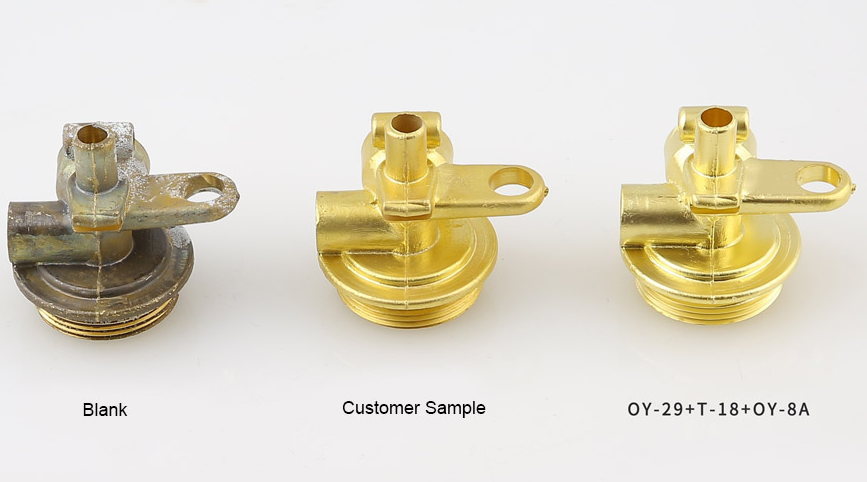In the brass surface treatment process, brass passivation is commonly used to prevent rust and corrosion on CNC machining parts. So, how to deal with brass CNC machining parts to prevent rust?

How to Clean Brass CNC machining parts degreasing
To clean brass CNC machining parts and degrease them thoroughly, you can follow these steps:
-Safety precautions: Ensure you have proper ventilation and wear protective gloves to protect your hands.
-Disassemble the parts: If possible, disassemble the brass parts to clean them separately. This enables better access to all surfaces.
-Remove excess grease: Use a rag or paper towel to wipe off any visible grease or oil from the parts.
-Choose a degreasing agent: Select a suitable degreasing agent, such as isopropyl alcohol or a specialized degreaser designed for metals like brass. Refer to the manufacturer’s instructions for the appropriate concentration and application method.
-Apply the degreaser: Dip a clean cloth or brush into the degreasing agent and apply it to the brass parts. Make sure to cover all surfaces, including crevices and hard-to-reach areas.
-Scrub and agitate: Use a soft-bristled brush or cloth to scrub the brass parts. Focus on areas with stubborn grease or dirt. Agitate the surface gently to help loosen the contaminants.
-Rinse with clean water: Once the degreaser has been applied and the parts have been adequately scrubbed, rinse them thoroughly with clean water. This ensures that all degreasing agents and loosened contaminants are removed.
-Dry thoroughly: Use a clean, lint-free cloth to dry the brass parts completely. Ensure there is no moisture remaining, as it can lead to tarnishing or corrosion.
-Reassemble and inspect: Once the parts are dry, reassemble them if necessary. Inspect the brass parts for any remaining grease, dirt, or residue. Repeat the cleaning process if needed.
How to protect Brass CNC machining parts passivation
To protect brass CNC machining parts through passivation, you can follow these steps:
-Prepare the passivation solution: Prepare a passivation solution by mixing citric acid or nitric acid with water. The specific concentration and ratio will depend on the type of acid used and the manufacturer’s instructions. Ensure you work in a well-ventilated area and wear appropriate protective equipment.
-Clean the parts: Ensure the brass parts are thoroughly cleaned and free from any grease, dirt, or contaminants. You can use a mild detergent or degreaser followed by a rinse with clean water.
-Immersion or application: There are two methods for passivation: immersion and application. For immersion, place the brass parts in the passivation solution and allow them to soak for the recommended time (usually controlled by the acid concentration and temperature). Alternatively, for application, apply the passivation solution directly to the brass parts using a brush or cloth while ensuring even coverage.
-Passivation time: The passivation time depends on the specific acid concentration, temperature, and the level of protection required. Follow the recommended guidelines provided by the passivation solution manufacturer.
-Rinse with clean water: After the recommended passivation time has elapsed, thoroughly rinse the brass parts with clean water to remove the passivation solution.
-Dry the parts: Use a clean, lint-free cloth to dry the brass parts completely. Pay attention to removing any moisture to prevent tarnishing or corrosion.
-Inspection and quality control: Inspect the brass parts for any remaining residue or signs of passivation. Ensure the desired level of protection and passivation has been achieved.
Passivation forms a protective layer on the brass surface, enhancing its resistance to corrosion and providing long-term protection. It is important to follow the specific recommendations provided by the passivation solution manufacturer and consult a professional SUCH AS CNCJY if you have any questions or concerns about the passivation process for your brass CNC machining parts.